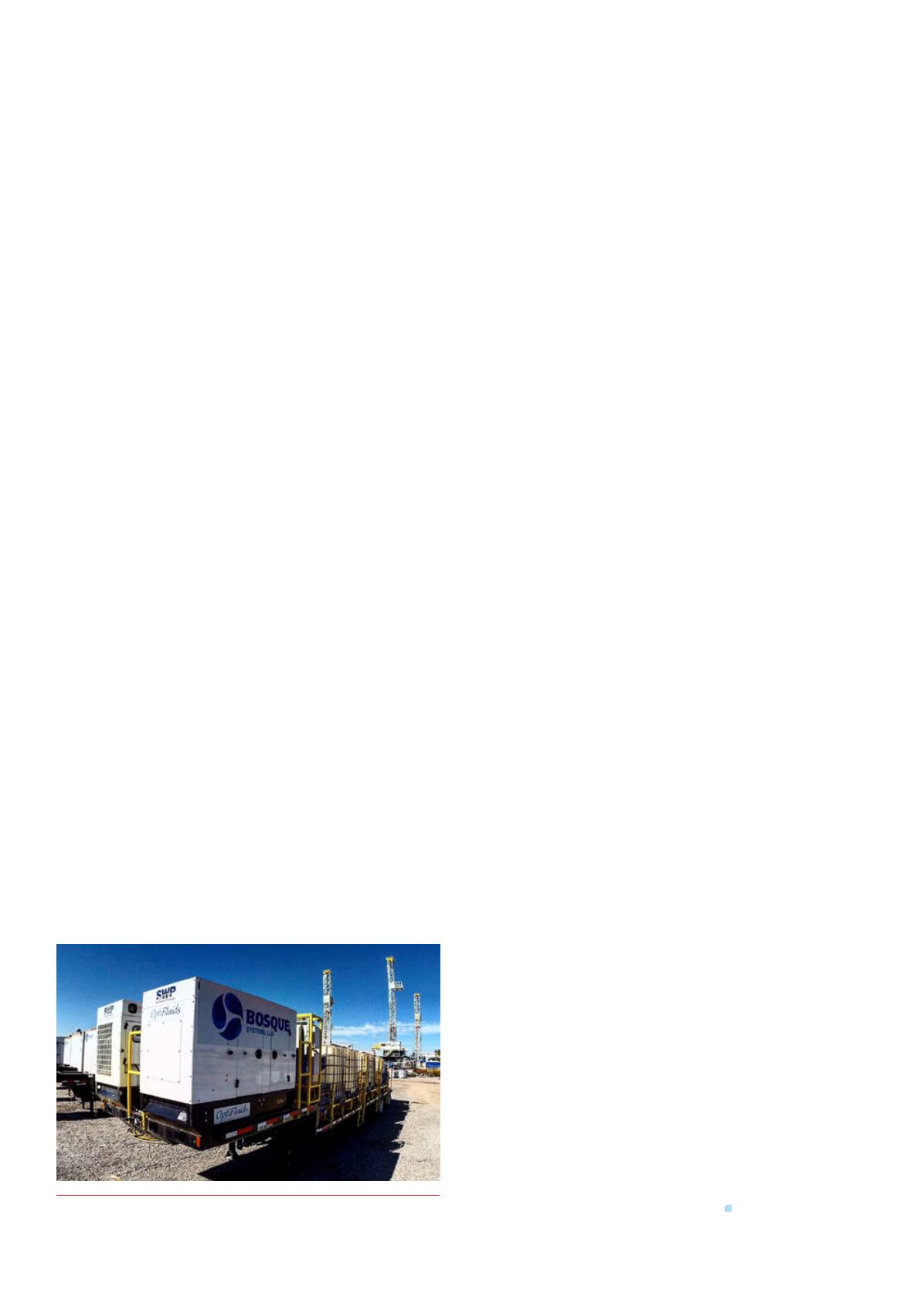
52 |
Oilfield Technology
June
2016
industry best practices, which would deliver the product mix in the
field.
After field testing chemical mixes in a variety of areas with
varying formations, temperatures and other conditions, the company
began formulating OptiFluid packages appropriate for each set of
conditions. This would give operators wells with fewer issues and
better production, while saving 30 - 40% on the cost of the chemicals.
From those first chemical company meetings to the initial field
use about four months elapsed.
To arrive at the proper chemical mix for each well, the service
engineers meet with the producer’s frack engineers and share
their expertise in frack fluid performance and compatibility design.
They learn what the producer is currently using and the extent to
which that design is bringing the desired results. The teammakes
recommendations based on all these factors and follows that up with
fluid performance and compatibility testing. Armed with this data the
producer can make an informed decision regarding the final formula.
Because chemicals such as high TDS friction reducers,
nanosurfactants, compatible scale inhibitors and biocides and
others have traditionally been delivered as part of a package,
without discussion, the idea of discussing and choosing a chemical
mix is often a new idea to producers. Even wells in the same field
and the same formation may require different frack packages to
achieve optimal production.
Frack chemicals amount to approximately 5% of the total
fracturing costs, but when an overall job runs into the millions,
chemicals still amount to hundreds of thousands of dollars. In 2014
US producers spent over US$9 billion in frack chemicals. Reducing
those numbers by 30 to 40% of that is significant even for individual
producers when calculated over a large number of wells. Some
producers have reported that this saves them enough money to allow
them to add one or more wells to their drilling budget over the course
of a year’s time.
OptiFluids also has the ability to measure exact amounts of
the required chemicals in order to give the best production results
and to provide accurate billing. The system utilises a two-axle
48 ft-long drop-deck flatbed trailer with a 12 - 330 g IBC tote
capacity that carries two 18 hour life diesel generators running 10
positive displacement pumps to deliver the fluids. The equipment is
controlled by an ESS wireless and analogue chemical pump control
system, including a data logger that uses a cellular network to
communicate to a customer-login website for reporting purposes.
The system can pump one chemical up to 12.5 gpt or 10 separate
chemicals at a rate of 1.25 gpt each.
Precise chemical measures are delivered through
a mass balance feed system that follows the job’s
predetermined recommendations. Operators observing a flow
meter can dial the pumps up or down in order to get dosages within
just over 1 ml of the numbers in the fluid design.
Operation observation is the first layer of a three-level
monitoring system. Second, Optifluids uses a calculated formula
based on a total flow rate, which tells the operator the expected
delivery quantity. Third, finely-tuned flow meters show the amount
of chemicals actually pumped.
Monitoring
Careful monitoring of delivery allows the mix to be altered if
conditions warrant. For example, the design may call for 1000 g of
friction reducer. But if engineers determine that friction levels are
lower than expected they can reduce the amount in the mix and
thereby save the customer money.
On the other hand, engineers may see that increasing the
friction reducer will lower the amount of horsepower needed for the
job. The savings in horsepower cost more than offset the additional
chemical charges.
Bosque’s website sends the data to the on-site frack manager,
who delivers the real time data as well as final reports to the
operator, showing that the exact formula was indeed delivered into
the well. Producers have greatly appreciated the completeness and
accuracy of the data provided.
Achieving ease-of-use was another goal of the OptiFluid
designers. Systems with this much sophistication and flexibility also
frequently require extensive training or expertise to operate. Early
returns for this system reveal an appreciation for its simplicity and
its economy of operation.
As the company began to speak to other clients about the
system, some expressed hesitation at the idea of unbundling for two
reasons. First, this was a new idea and, because these companies
had not thought of separating the pumps from the product before,
it took some getting used to. Second, they were concerned about
having additional equipment and people at the well site.
But those who tried the system quickly gained an appreciation
for the cost savings, the precise chemical delivery and the
information provided.
One client, who was paying approximately US$9/gal. for frack
chemicals, is saving 40% on the total package, which includes
chemical prices, amount of chemicals used and labour. This
reduction in cost saves US$3.5 million in 2015 alone. This will allow
the producer to drill one more well than they had previously had in
their budget for the year.
It is important to note that the exact price per gallon of
frack fluid is deemed most viable for each well, along with the
price offered by the manufacturer at the time Bosque makes the
purchase.
End users have also seen economic benefits from increased
production due to careful selection of frack fluids. By utilising
Optifluids trailers, one producer can expect a percentage difference
in oil recovery.
Conclusion
During the four years or so when oil prices hovered around
US$100/bbl, few companies looked closely at a cost so seemingly
small as frack fluids. But with 2015’s precipitous drop, every ledger
entry, every penny spent has gotten a much closer look.
OptiFluids can not only reduces costs, but it can provide
operators with more precise control over the frack process with the
potential for improving results as well. This two-phase benefit has
resonated well in the industry at this time.
Figure 1.
BosqueOptifluidsmobile stationary unit.


